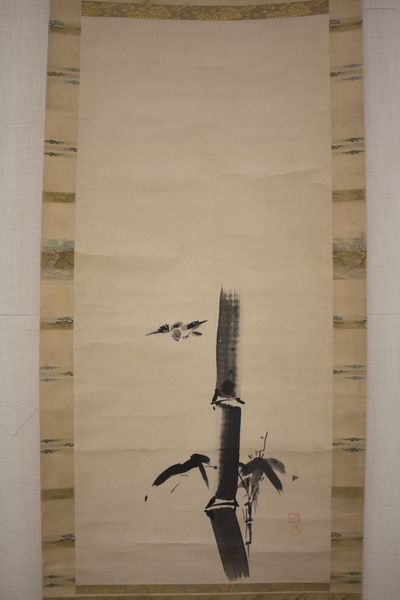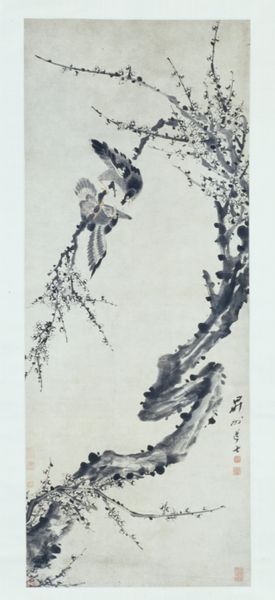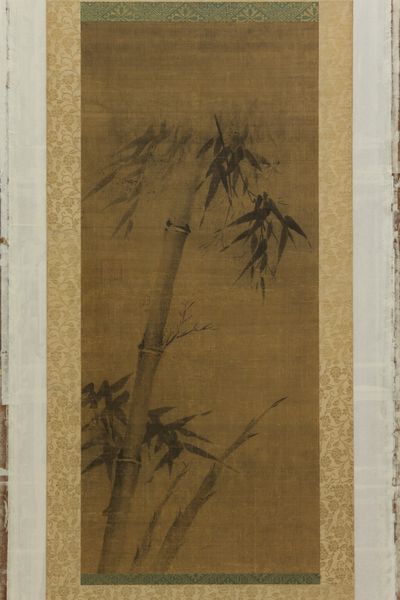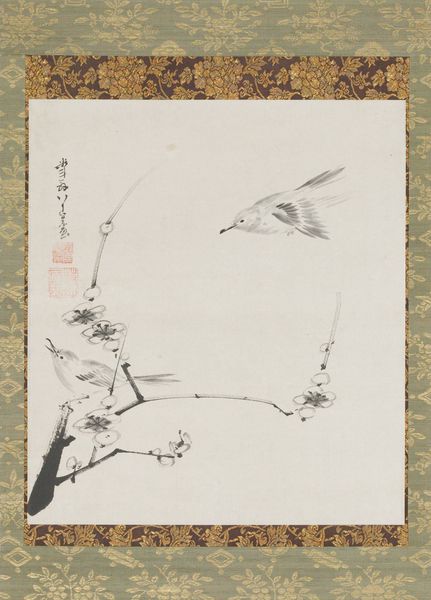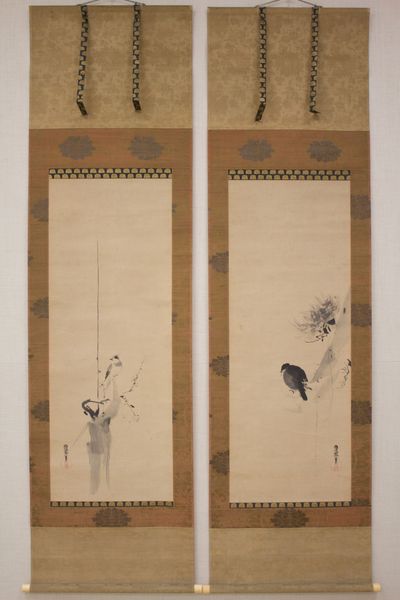
Dimensions: 37 1/2 x 17 1/4 in. (95.3 x 43.8 cm)
Copyright: Public Domain
Editor: This is "Squirrels on Bamboo and Rock," an ink drawing on paper by Kano Osanobu, created sometime between 1810 and 1830. It’s a muted landscape with such a whimsical feel. What's your take on this piece? Curator: It's tempting to see this image as simply decorative, a charming snapshot of nature. But situating it within its historical moment, Japan’s Edo period, reveals a potentially more complex story. We have rapidly urbanizing populations, increased merchant power and influence in what had previously been rigidly controlled society. How might depictions of "nature" function in this environment? Is this pure observation or something more intentional? Editor: You mean, could it be a commentary on societal shifts, perhaps referencing power dynamics? Curator: Exactly! The squirrels themselves are a key point. Are they simply charming creatures, or do they stand in for something else? Their placement within a bamboo grove might allude to specific social classes or even political factions. The way nature is controlled or framed here, is itself worthy of inquiry, it subtly mirrors the existing power structures in society. The natural world, much like the societal one, has its own kind of hierarchy, a subtle push against rigid order that we see in paintings like this. What do you think of the use of empty space within the work? Editor: I hadn't thought about the symbolism of the animals themselves! I focused on the serene feeling of the image overall, the light washes, but I understand how one can also see a more subversive commentary. The emptiness could be about open futures or possibilities... Curator: Precisely, reading the blankness could be the possibility of futures, which is so interesting for that time period. Editor: Wow, I'm seeing it completely differently now. Thanks so much!
Comments
No comments
Be the first to comment and join the conversation on the ultimate creative platform.


